When buying a new TV for your home, it’s easy to get overwhelmed by the number of different brands on the market.
Each brand offers something different in terms of features, and no two are the same. For instance, if you’re stuck between Insignia vs Samsung, this article can help you decide.
Insignia vs samsung comparison
Insignia is a budget-oriented TV brand that is produced by several TV manufacturers for Best Buy. Although Best Buy stays silent on who it outsources TVs from, all Insignia TVs are produced in a factory in China, and its high-end TVs are made by Hisense (see our Hisense vs Samsung comparison), while the manufacturer of low-end TVs is not disclosed.
On the other hand, Samsung is a well-known electronics brand from South Korea, which also makes smartphones, hard drives, monitors, printers, speakers, cameras and other electronics in addition to TVs.
Insignia
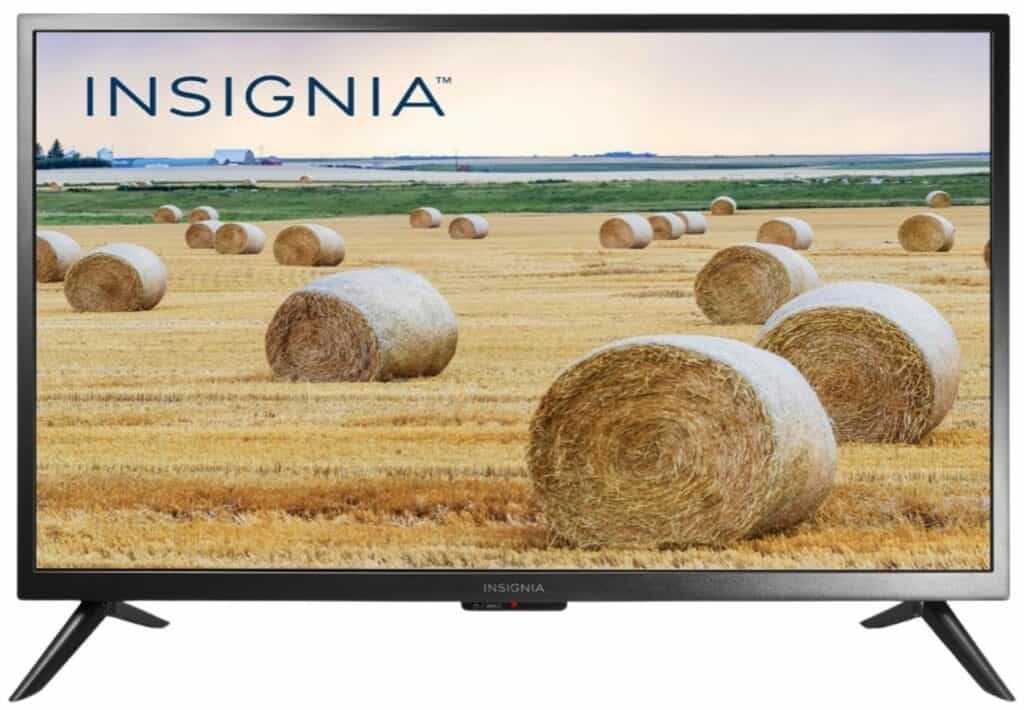
Pros:
- Budget-friendly
- Good reflection
- Already has Fire TV enabled
- Lots of smart TV options
Cons:
- No premium 4K models
- The components are often outdated
- Mediocre sound quality
Samsung
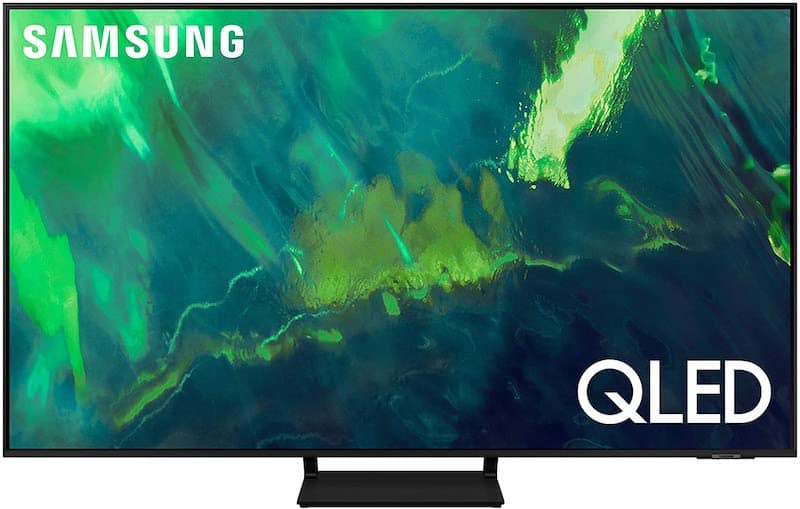
Pros:
- Single cable connection
- Beautiful design
- Anti-glare technology
- Plenty of apps and gaming features
Cons:
- High price compared to other brands
- Judder issues on low-end TVs
- Security issues
- Performance can be unreliable (we’ve covered a lot of Samsung problems, check out these fixes for when your Samsung TV keeps turning off, for example).
Features Face to Face
Panel Technology
Insignia exclusively manufactures TVs that use standard LED VA (Vertical Alignment) panels, which convert an electric signal into an image by using light-emitting diodes (LED).
Samsung uses its in-house QLED technology for panels, which is capable of displaying excellent color in images.
Compared to LED, QLED has better color accuracy, brightness and contrast, which allows it to produce a more high-quality image. However, the downside is that it uses more energy and costs more.
Winner: Samsung
Image Processor
When it comes to the image processor, Insignia uses a quad-core MediaTek MTK T31/L processor with ARM Cortex-A55, with a 1.5GHz clock speed. This is a SOC (system-on-a-chip) type of processor, meaning that it has all the system components, like power management, GPU, etc.
Samsung uses a Neo Quantum processor in its TVs. Depending on whether it’s a 4K or 8K TV, the processor can be either Neo Quantum 4K (MediaTek MT9613) at 1.4GHz speed or Neo Quantum 8K (MediaTek MT9950) at 1.8GHz.
Winner: Samsung
Motion Technology
You’ll get good response times with Insignia, but the motion technology isn’t worth bragging about, as it typically transitions between pixels in about 20 milliseconds. For reference, the standard you’re looking for is 14ms.
This makes Insignia less than ideal for watching rapid action, like a movie, as you’ll see a lot of blur.
Additionally, the refresh rate on all Insignia TVs is only 60Hz, which is a bit low by today’s standards.
In comparison, Samsung cuts the pixel transition time to 10 or fewer milliseconds, making it superior in this aspect to Insignia TVs.
In addition, although older Samsung models have a refresh rate of 60Hz (same as Insignia), the newer models have a 120Hz refresh rate.
Winner: Samsung
Picture Quality
Since Insignia is a budget brand, and Samsung is a premium brand, the picture quality will inevitably be different when comparing Insignia vs Samsung TVs.
Keeping that in mind, let’s see what each brand has to offer.
Contrast Ratio / Black Level
The contrast ratio represents the relation between black and white color. For example, a 1000:1 contrast ratio means that white is 1000x brighter than black. You want as high a number as possible here.
Most Insignia TVs have a very good native contrast ratio of around 1,000-5,000:1 (for example, the Insignia F50 model has a contrast ratio of 4,883:1), so it is able to produce deep blacks in a dark environment.
On the other hand, Samsung offers an excellent contrast ratio, with its high-end TV models often exceeding the 5,000:1 mark (like is the case with Samsung TU7000, which has a contrast ratio of 8,327:1). As a result, you can expect even deeper blacks than on Insignias.
Winner: Samsung
Local Dimming
Local dimming is a very useful feature for making dark colors even darker. Of course, this, as with any other feature, will depend on the specific model.
Insignia TVs typically lack local dimming properties because of their direct-lighting backlight configuration.
In comparison, Samsung models have very good local dimming properties and can display minimal bloom.
Winner: Samsung
Peak Brightness
Another important feature to look at when buying a new TV is its peak brightness. This is the maximum brightness that the TV screen is capable of and shows us how that TV will perform in bright environments (like a living room, for instance).
Here, we have to look at two types of peak brightness — SDR and HDR, and it is measured in cd/m2 or candela per square meter or in nits (these two units are interchangeable, so 1 cd/m2 = 1 nit).
With Insignia, you can expect around 280 cd/m2 for SDR peak brightness and 290 cd/m2 for HDR peak brightness, making its models good when it comes to SDR, but not able to deliver enough brightness on HDR content.
Samsung’s TVs generally outperform its rival here, with, for instance, Samsung Q80T has 710 cd/m2 for SDR content and 740 cd/m2 for HDR content.
Winner: Samsung
Color
When it comes to color, smart TVs, including Insignia and Samsung, use a DCI P3 color scale, which has 26% more color space than sRGB and can use 10-bit color, compared to sRGB’s 8-bit.
Looking at Insignia’s FireTV Edition 4K, it has a color gamut (meaning a range of colors within the spectrum or color space that it can produce on the screen) of 78.16% DCI P3 xy and 84.22% DCI P3 uv, so it’s okay, but not great. To learn more about what these values mean, visit the Wikipedia page for the CIELUV color space.
Alternatively, Samsung TVs commonly exceed a DCI P3 range of 80% in color gamut, especially on newer models like the Samsung Q900TS 8K, which has a color gamut of 91.55% DCI P3 xy and 94.35% uv.
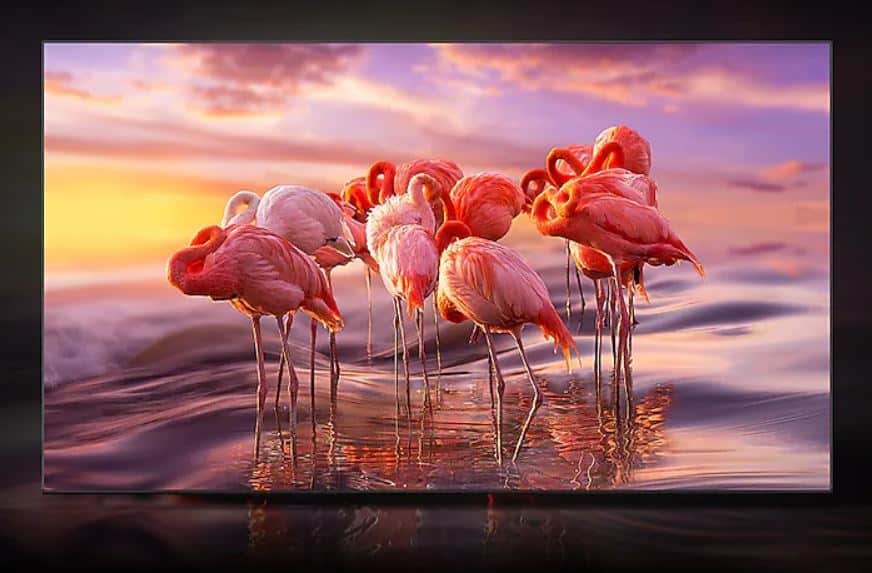
Winner: Samsung
Viewing Angle
One of the biggest problems with LED displays is that they have pretty bad viewing angles and will lose brightness any time you shift a little off-center.
This is where Insignia TVs are very bad, as it has narrow angles which affect accuracy and brightness.
Samsung TVs, however, generally have wider viewing angles, with most models (at least newer ones) having the “Ultra Viewing Angle” layer.
Winner: Samsung
Reflections / Anti-Glare
To combat reflection, TV manufacturers use different types of coating or finishes on their screens, typically glossy and semi-glossy. Let’s see how Insignia and Samsung TVs compare in this regard.
Insignia TVs mostly use a semi-gloss coating. This makes their models okay in an averagely lit room when dealing with reflections, but they tend to struggle in brighter environments.
In comparison, Samsung TV models mostly come with a glossy coating and are better at handling reflections, even in bright rooms.
Winner: Samsung
Sound Quality
Unless you’re a silent movie fan, sound quality will be pretty important to you.
Unfortunately, Insignia TVs are not known for their audio quality, with its built-in speakers rarely going above 20W output power (and even that is on higher-end models, most are in the 5-10W range).
We definitely recommend buying a soundbar (here are some good soundbars) for your Insignia TV.
With Samsung, however, you’ll immediately notice that the audio quality is superior and has very good frequency response.
Plus Samsung uses Object Tracking Sound (OTS) technology, which “Analyzes the input and content (e.g., movies, streaming, sports, gaming) and optimizes and sends the sounds to the relevant speakers in your TV, making sound move with the action.”
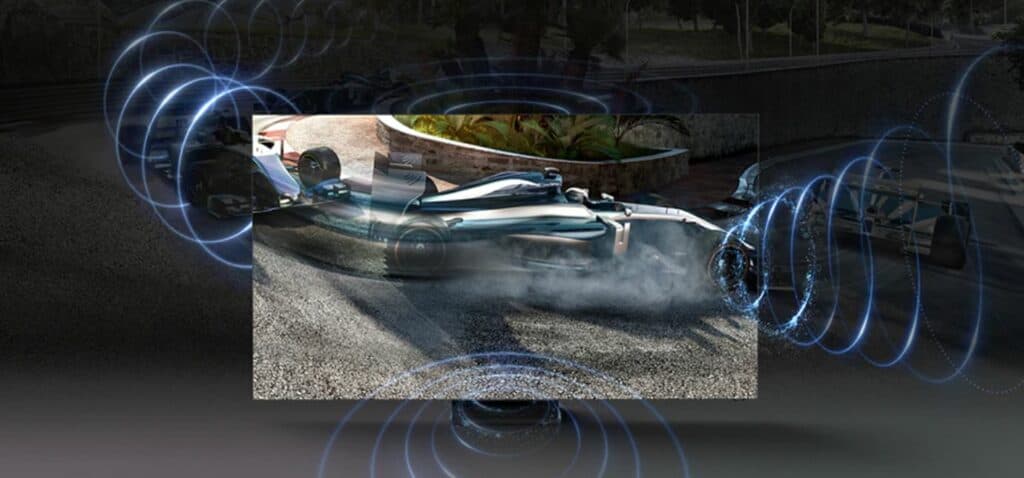
If you want to know more, read up on Samsung’s OTS technology on Samsung’s website.
Winner: Samsung
Smart TV Platform (Operating System)
Insignia TVs run on Amazon’s Fire TV smart platform, while Samsung TVs run on TizenOS. Here’s a table comparing the two:
| OS Features | Insignia | Samsung |
|---|---|---|
| OS Version | Fire TV | TizenOS |
| App Selection/Variety | 8/10 | 6/10 |
| App Smoothness | 6/10 | 9/10 |
| Ease of Use | 8/10 | 9/10 |
| Interface Layout | 7/10 | 8/10 |
As you can see, while Fire TV has better app selection and variety, in all other aspects (app smoothness, ease of use and interface layout), Samsung’s TizenOS is better.
Winner: Samsung
Connectivity
Smart TVs have long stopped being used for just watching TV programs, and many include a wide range of connectivity features that can improve user experience.
Here’s what Insignia and Samsung TVs have to offer.
Inputs
Since input specs will inevitably vary depending on the model you’re looking at, particularly when it comes to two models in a different price range, this is one category that you should look at with some more scrutiny.
| Input Ports | Insignia | Samsung |
|---|---|---|
| HDMI Ports | 2-3 | 4 |
| USB Ports | 1 | 2 |
| Digital Optical Audio Out | 1 | 1 |
| Ethernet Port | Yes | Yes |
Winner: Samsung
Voice Assistant
Since Insignia runs on Amazon’s Fire TV OS platform, it also has the advantage of using one of the top voice assistants in the industry — Alexa.
Samsung uses its proprietary Bixby voice assistant, which is nowhere near Alexa and is often the first thing users look to turn off when getting a new Samsung. What’s worse, Samsung doesn’t disclose whether your personal information is encrypted in transit or at rest when it comes to Bixby.
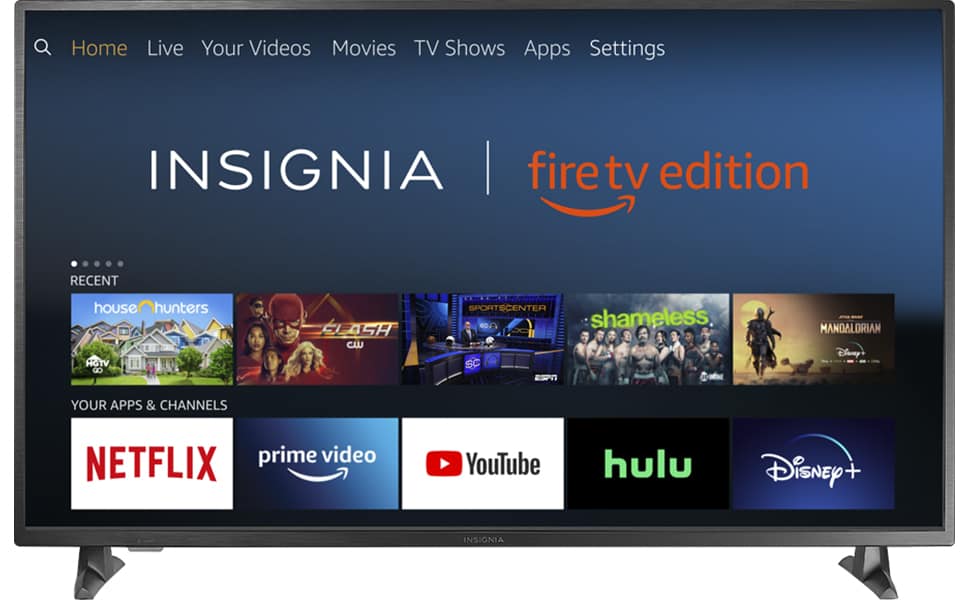
Winner: Insignia
Wireless Technologies
Both TV brands support 2.4GHz and 5GHz WiFi standards and come with Bluetooth support, allowing you to connect to the home network, stream content and use a wireless speaker.
Winner: Draw
Standout Features
If you want a little extra from your TV than what we’ve included above, Insignia will probably disappoint you as there are no standout features to speak of here.
On the other hand, Samsung is compatible with G-SYNC and FreeSync, as well as U8G and comes with HDR10+.
Winner: Samsung
Price
Comparing prices with these two is a bit difficult since one is a budget and the other a premium brand.
With Insignia TV models, the price rarely goes above $250, with most models being in the $100-200 range.
For instance, here is one of the more popular models from Best Buy:
Insignia 32-inch D2 TV
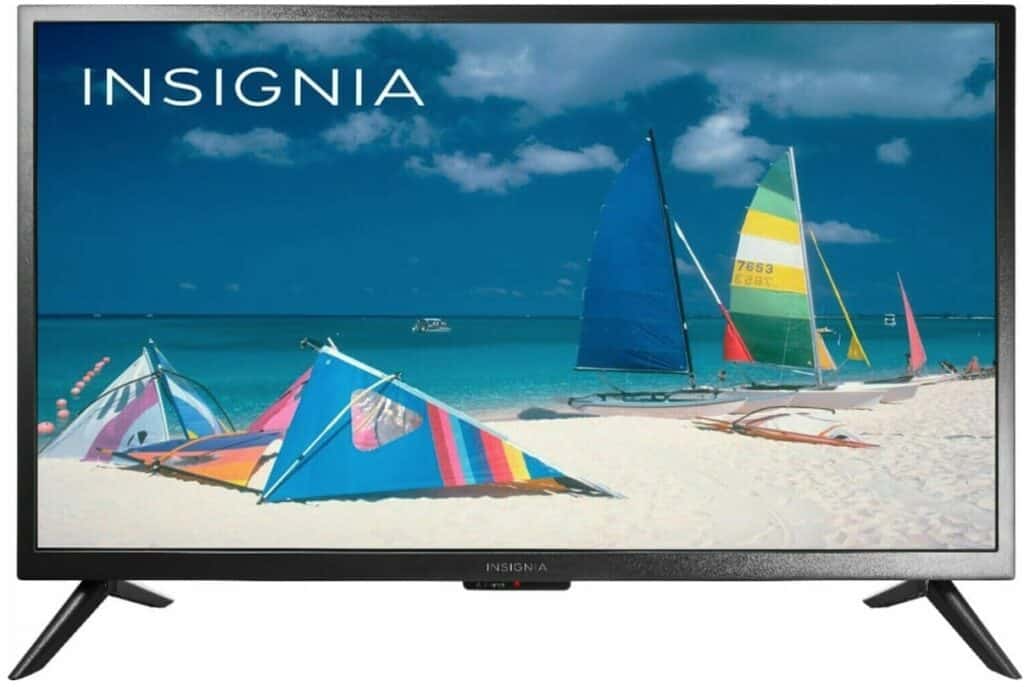
Samsung Smart TV Q60A Series
Samsung, in comparison, is a lot more expensive. For instance, its 32-inch Q60A 4K model is twice as expensive as Insignia’s model above.

Conclusion
Comparing Insignia vs Samsung TVs, on some level, wasn’t really fair since one is a budget brand and the other a premium brand (this Insignia vs TCL comparison is probably much fairer if you’re looking for affordable TVs.)
If we look at the two just through their technical specs, Samsung is a clear winner, and you probably didn’t need us to tell you that.
That said, ultimately, it depends on how much money you have to spend. If you’re okay with spending $500+ for a TV, you can’t get much better than Samsung. However, if you only have $200 or so, then Insignia is more than adequate.